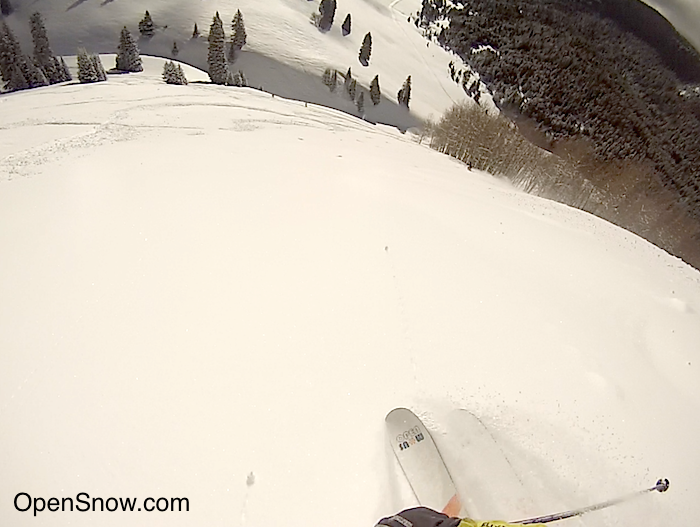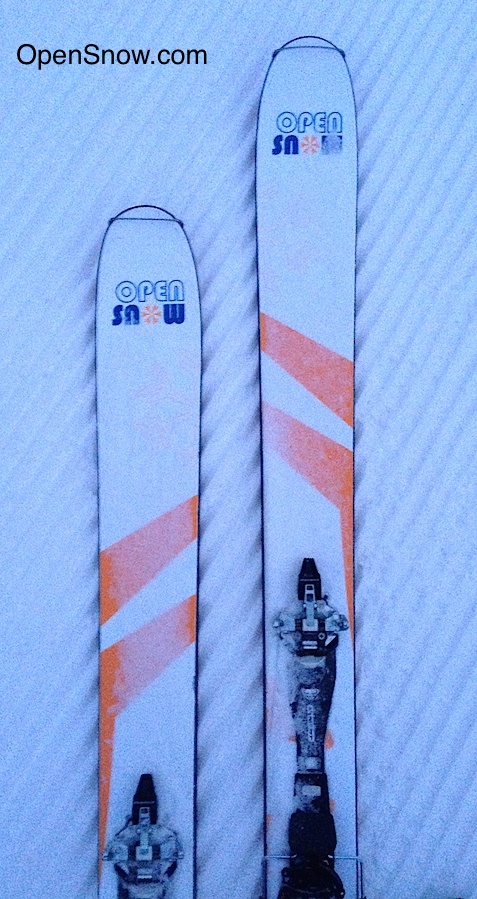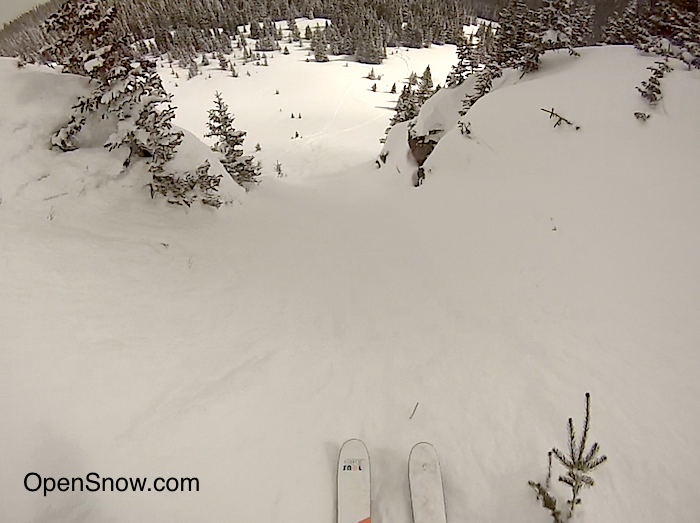News

By Joel Gratz, Founding Meteorologist Posted 10 years ago April 17, 2014
The two pieces of gear that changed my skiing
Here are two pieces of gear that changed my skiing. They might help you as well.
1) Wide skis.
My previous skis were 108mm underfoot, which many people consider a mid-fat. Pretty good on groomers, pretty good in powder. This season I got a pair of skis that are 126mm underfoot. They are really fat, and I assumed that I would only use them on a few deep powder days. That was wrong. I used them on the majority of days when there was any fresh snow.
Fat skis are to powder what shaped skis are to groomers. Each makes the experience easier and more enjoyable. I've been skiing for 28 years, since I was 4 years old, and during that time I never cared much about gear. But my new powder skis made me realize how important gear selection is. In short, multiple friends told me that I was skiing better this year than any other year, and the only change I made was new skis.
If you are thinking about buying wider skis for next season, here are two tips.
First, find the lightest skis. Fat skis won't make skiing powder more enjoyable if they tire out your legs. In fact, my current 126mm wide skis are lighter than my 108mm skis. Bring a scale with you to weigh the skis in the shop if you can't find the specs online. Seriously, weight matters, and that applies to bindings as well, so find a light pair that won't weigh you down (I used the Salomon STH12).
Second, look for a geometry where the tail of the skis is narrower than the waist of the ski. This helps you get out of turns with little effort, instead of being locked into a turn or feeling like you get "ejected" out of a turn. The width of my skis are 151mm at the tip, 126mm at the waist, and 116mm at the tail.
What are the benefits of a light, fat powder ski?
You'll be less tired because you'll be doing less work (the wider ski surfs over the snow). Sure, you won't get as many faceshots because the ski won't dive into the snow as far. But I found that I'm OK with that tradeoff since I can now ski 1,500ft of powder without getting tired legs.
You also might find tree skiing to be easier. A narrower tail allows you to whip your skis around quickly as they are not locked into a turn, and this added mobility will help you zoom through the trees without needing to scrub speed. This was a game-changer for me. I have always enjoyed tree skiing, but was never very good at it beause I couldn't turn my skis fast enough. I no longer have that problem.
And you also might enjoy getting some air since you have a wider ski to land on. I am not good in the air and rarely land any jump, so I've always shied away from going airborne. But a bigger landing platform means fewer falls, and that means you'll try little jumps more often, and that means you might get the hang of being in the air and start to enjoy it. At least that was my experience.
Of course this is all just my opinion, and your experience might differ. But I wanted to share my thoughts because these wide skis helped me have a lot more fun this season.

That's me enjoying fresh tracks on wide powder skis at Vail.
A special thanks to Wagner Custom Skis for getting me setup with a ski made just or me.
2) Lighter Bindings.
I just talked about how a light setup can help you ski longer without getting tired.
I know many of you are like me and enjoy spending time in the backcountry, which means you also need a light uphill binding (Alpine Touring, or AT binding).
I've gone through three AT bindings. My first pair eight years ago were the Fritschi Freerides. They were relatively inexpensive, so they were a great starter binding. But they pre-released a lot and also didn't ski very well (they felt a bit flimsy).
My second pair were the Marker Barons. They skied like a regular binding, and I put them on my everyday ski, so I used them at resorts in powder, ripping groomers, and going uphill in the backcountry. While they skied well, they were heavy on the uphill and cumbersome to switch between uphill and downhill modes.
Then this season, I started using a pair of Dynafit Radical FT bindings on my wide powder skis. These bindings are about 70% lighter than the Marker Baron's, so skinning uphill feels much easier.

Dynafit Radical FT Bindings on my powder skis.
These bindings pivot from your toes, which provides a much more natural walking/skinning motion. And, I was pleasantly surprised to find that they skied downhill just as well as any other binding I've used. They did pre-release on me once when I hit buried crust at a resort at high speed, so they're not perfect (no binding is). But that's been the only issue, and I've felt comfortable with them at all other times, even in narrow chutes and at high speed.

Straightlining a chute at Berthoud Pass on my Dynafit AT bindings. I was going fast, and the bindings were rock solid even though they were the lightest binding I'd even skied in the backcountry. Thanks to Joel Bettner, coach of the CU Freestyle Ski Team, for giving me a pep talk and getting me to take this line.
There seems to be a progression to backcountry ski gear. The Fritschis and Barrons get you into the sport to see if you like it. And if you do enjoy earning your turns, eventually you might upgrade to the Dynafits. Again, weight is a big deal, and making my setup lighter has allowed me to enjoy my time on the hill (both going up and going down) without getting as tired as I used to be.
A special thanks to the crew at Dynafit for getting me into this lighter binding!
JOEL GRATZ
Disclaimer
Sometimes I get free gear from manufacturers and free skiing from resorts and cat/heli operations. This is awesome. But of course this means that there is a HUGE conflict of interest when I write reviews about the gear or ski operations. I hope that you believe that my reviews are truthful, and that I would never undermine my credibility and career in the ski industry over a free piece of gear or a trip. And I hope that my reviews will spark your interest and that you'll do more research on your own to form your own opinions. As always, if you have thoughts or questions, you can get in touch with me directly at this email address: [email protected]
About The Author





